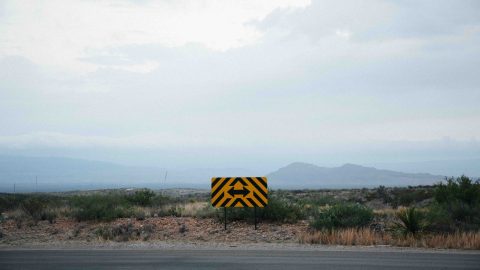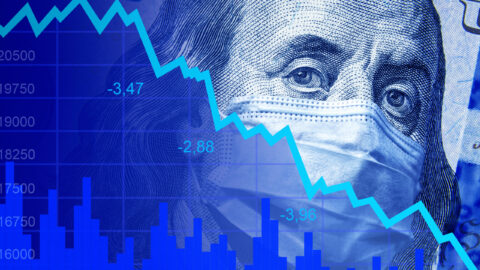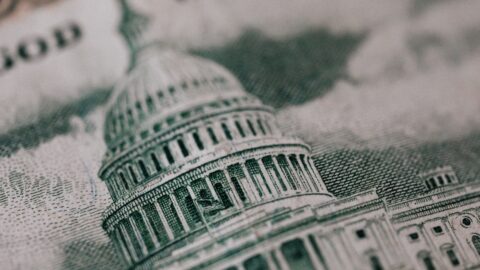The distortions on the financial market continue, and the prices of risky asset classes such as equities and corporate bonds with low credit quality are falling. By contrast, the prices of safe-haven asset classes (safe government bonds and gold) are on the rise. The market prices have increasingly come to reflect a global recession.
4 uncertainties
The driving factor of the markets is the spreading of the coronavirus (COVID-19). This involves four uncertainties:
1. The development of the virus. The confirmed new infections of COVID-19 outside of China are still rising at high rates. Questions about the characteristics of the virus cannot be answered reliably: seasonal (i.e. dependent on temperature) or permanent? Therapy? Vaccination? Mutations? Number of asymptomatic cases?
2. Measures taken to contain the virus from spreading. The measures necessary to contain the virus of course come with a strongly negative effect for the economy. Global GDP for Q1 2020 is likely to shrink.
3. Spill-over effects to initially unaffected sectors and countries. This includes the disruption of supply chains and the more cautious stance with regard to consumption and investment. Also, the risk of increasing default rates is on the rise, given that sales revenues might plummet but fixed costs (taxes, interest rates on loans) still have to be paid. While China is probably going to recover in Q2, the likelihood of the GDP shrinking again has increased significantly in Japan and the Eurozone. The risk of recession is rising in the USA as well, because the virus keeps spreading.
4. Measures to dampen the negative economic effects. The central banks have already reacted by loosening their monetary policies on a global scale, mainly through interest rate cuts. In countries where the key-lending rate is already very low, other steps such as targeted, higher liquidity provision for banks and stepped-up asset purchase programmes could be taken. This is meant to stifle the negative feedback loop between the tightening financial environment and economic activity.
In addition, governments are considering economic stimulus packages. The most important measures are the ones aimed at preventing the number of defaults from rising (reduced working hours, tax moratoria).
OPEC issues
All of that adds to the gravity of the oil cartel OPEC and Russia’s failing to agree on curbing output. The massive slump of the oil price has a disparate set of effects on the global economy (oil-importing and oil-exporting countries).
The common denominator is the fact that the pressure towards lower inflation rates resulting from this situation will rise further. The focus is currently on highly geared oil-producing companies and countries (falling creditworthiness and, as a result, possibly rating).
What are the likely scenarios
Conclusion: asset prices have reflected the revision from initially positive to negative economic scenarios over recent weeks.
- Phase 1: recovery in 2020
- Phase 2: quick recovery in Q2 after slump in Q1 (scenario “V”)
- Phase 3: recovery in the second half – scenario “U”
- Phase 4: assets prices are in regions that increasingly suggest a recession – scenario “L”
Conclusion:
Put differently, initially investors with short-term horizons were selling, but in the meantime some of the investors with long-term (cyclical) orientation have thrown in the towel as well. Probably the most important factor for the future development of asset prices is the spreading of COVID-19 from here on in.
On the upside: a noticeable decline in new infection rates could trigger the recovery of risk asset classes.
On the topic of “Coronavirus and the consequences for the global economy” you can read further analyses on Erste AM Blog: https://blog.en.erste-am.com/coronavirus-the-economic-effects-of-epidemics-and-pandemics/
Legal note:
Prognoses are no reliable indicator for future performance.
Legal disclaimer
This document is an advertisement. Unless indicated otherwise, source: Erste Asset Management GmbH. The language of communication of the sales offices is German and the languages of communication of the Management Company also include English.
The prospectus for UCITS funds (including any amendments) is prepared and published in accordance with the provisions of the InvFG 2011 as amended. Information for Investors pursuant to § 21 AIFMG is prepared for the alternative investment funds (AIF) administered by Erste Asset Management GmbH pursuant to the provisions of the AIFMG in conjunction with the InvFG 2011.
The currently valid versions of the prospectus, the Information for Investors pursuant to § 21 AIFMG, and the key information document can be found on the website www.erste-am.com under “Mandatory publications” and can be obtained free of charge by interested investors at the offices of the Management Company and at the offices of the depositary bank. The exact date of the most recent publication of the prospectus, the languages in which the fund prospectus or the Information for Investors pursuant to Art 21 AIFMG and the key information document are available, and any other locations where the documents can be obtained are indicated on the website www.erste-am.com. A summary of the investor rights is available in German and English on the website www.erste-am.com/investor-rights and can also be obtained from the Management Company.
The Management Company can decide to suspend the provisions it has taken for the sale of unit certificates in other countries in accordance with the regulatory requirements.
Note: You are about to purchase a product that may be difficult to understand. We recommend that you read the indicated fund documents before making an investment decision. In addition to the locations listed above, you can obtain these documents free of charge at the offices of the referring Sparkassen bank and the offices of Erste Bank der oesterreichischen Sparkassen AG. You can also access these documents electronically at www.erste-am.com.
Our analyses and conclusions are general in nature and do not take into account the individual characteristics of our investors in terms of earnings, taxation, experience and knowledge, investment objective, financial position, capacity for loss, and risk tolerance. Past performance is not a reliable indicator of the future performance of a fund.
Please note: Investments in securities entail risks in addition to the opportunities presented here. The value of units and their earnings can rise and fall. Changes in exchange rates can also have a positive or negative effect on the value of an investment. For this reason, you may receive less than your originally invested amount when you redeem your units. Persons who are interested in purchasing units in investment funds are advised to read the current fund prospectus(es) and the Information for Investors pursuant to § 21 AIFMG, especially the risk notices they contain, before making an investment decision. If the fund currency is different than the investor’s home currency, changes in the relevant exchange rate can positively or negatively influence the value of the investment and the amount of the costs associated with the fund in the home currency.
We are not permitted to directly or indirectly offer, sell, transfer, or deliver this financial product to natural or legal persons whose place of residence or domicile is located in a country where this is legally prohibited. In this case, we may not provide any product information, either.
Please consult the corresponding information in the fund prospectus and the Information for Investors pursuant to § 21 AIFMG for restrictions on the sale of the fund to American or Russian citizens.
It is expressly noted that this communication does not provide any investment recommendations, but only expresses our current market assessment. Thus, this communication is not a substitute for investment advice.
This document does not represent a sales activity of the Management Company and therefore may not be construed as an offer for the purchase or sale of financial or investment instruments.
Erste Asset Management GmbH is affiliated with the Erste Bank and austrian Sparkassen banks.
Please also read the “Information about us and our securities services” published by your bank.


